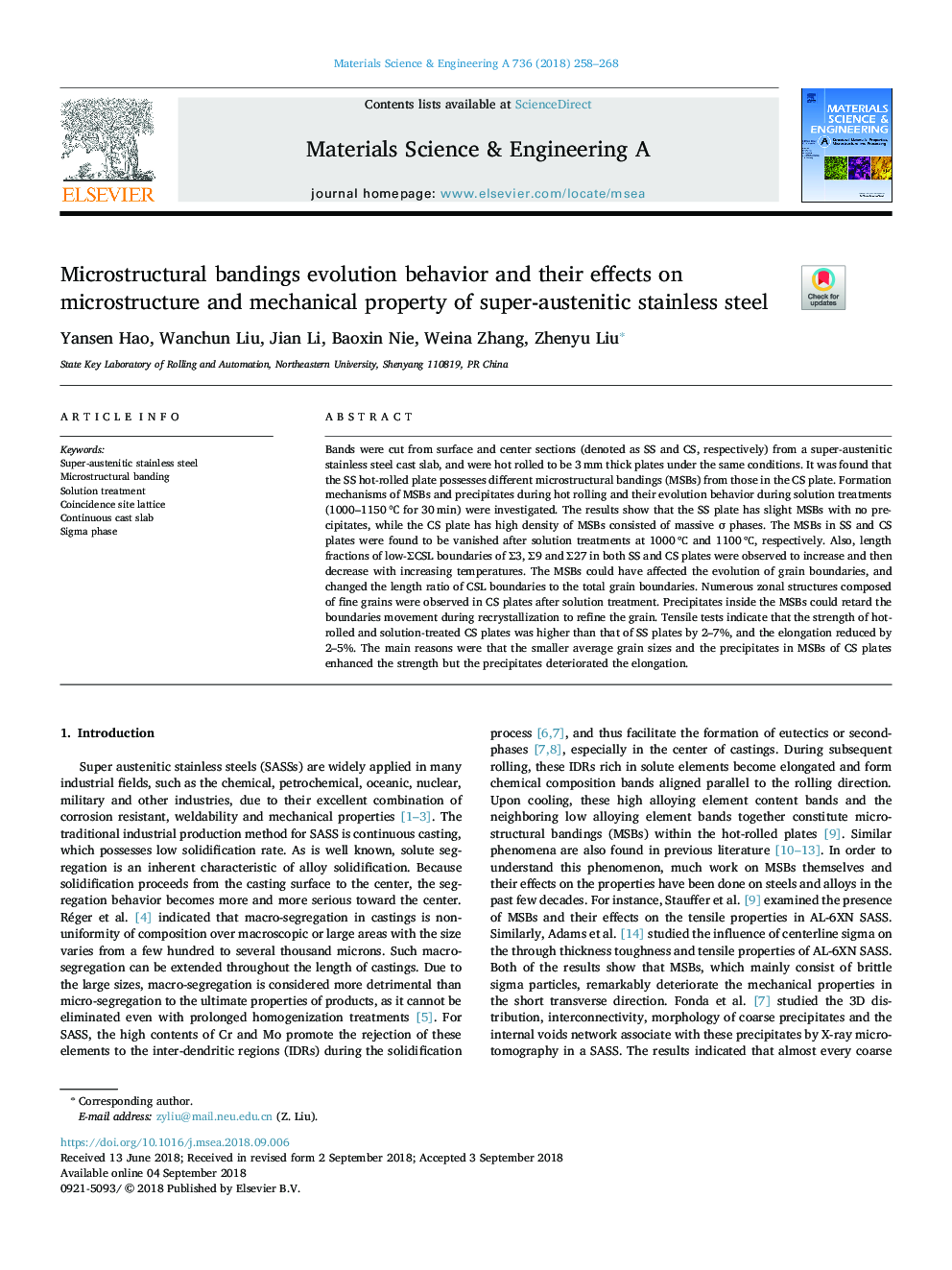| Article ID | Journal | Published Year | Pages | File Type |
|---|---|---|---|---|
| 10142017 | Materials Science and Engineering: A | 2018 | 11 Pages |
Abstract
Bands were cut from surface and center sections (denoted as SS and CS, respectively) from a super-austenitic stainless steel cast slab, and were hot rolled to be 3â¯mm thick plates under the same conditions. It was found that the SS hot-rolled plate possesses different microstructural bandings (MSBs) from those in the CS plate. Formation mechanisms of MSBs and precipitates during hot rolling and their evolution behavior during solution treatments (1000-1150â¯â for 30âmin) were investigated. The results show that the SS plate has slight MSBs with no precipitates, while the CS plate has high density of MSBs consisted of massive Ï phases. The MSBs in SS and CS plates were found to be vanished after solution treatments at 1000ââ and 1100ââ, respectively. Also, length fractions of low-ΣCSL boundaries of Σ3, Σ9 and Σ27 in both SS and CS plates were observed to increase and then decrease with increasing temperatures. The MSBs could have affected the evolution of grain boundaries, and changed the length ratio of CSL boundaries to the total grain boundaries. Numerous zonal structures composed of fine grains were observed in CS plates after solution treatment. Precipitates inside the MSBs could retard the boundaries movement during recrystallization to refine the grain. Tensile tests indicate that the strength of hot-rolled and solution-treated CS plates was higher than that of SS plates by 2-7%, and the elongation reduced by 2-5%. The main reasons were that the smaller average grain sizes and the precipitates in MSBs of CS plates enhanced the strength but the precipitates deteriorated the elongation.
Related Topics
Physical Sciences and Engineering
Materials Science
Materials Science (General)
Authors
Yansen Hao, Wanchun Liu, Jian Li, Baoxin Nie, Weina Zhang, Zhenyu Liu,
